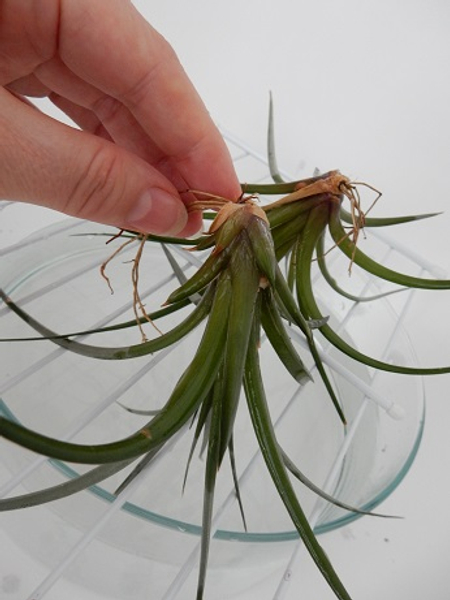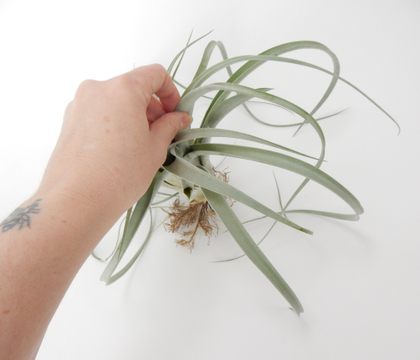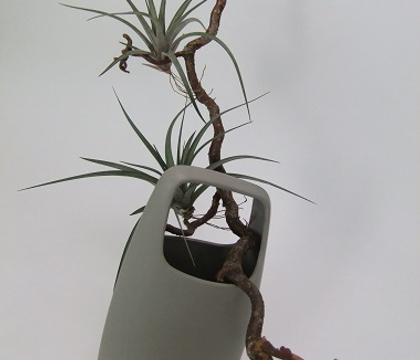Christine de Beer - effortless floral craftsman
Taking care of Tillandsia
- 9 July 2014
- and more
Tillansia or air plants are naturally found in a wide range of environments form rain forests to the driest desert environment, from from sea level to high mountain regions.
Almost all the Tillandsia species attach themselves to their host rock, tree, or log with their long root systems. It is important to remember that they are not parasites but are more resting in this host environment, absorbing moisture and nutrients through their leaves.
This classifies them as epiphytes. The air plants absorb nutrients through tiny scales on the spiky leaves called trichomes. It is the trichomes that makes the plants appear silver or gray.

There is such a wide variety of air plants available

... ranging in size, shape, texture, bloom and color.

and is part of the largest genus in the bromeliad family.

making up for 550 of the more than 3,170 species of bromeliads.

Designing with air plants is so convenient because, just like succulents, Tillandsias do not require a constant water source and even cut leaves will remain turgent.
See the Tutorial below for more details about designing with Tillandsia
For the most air plants require fair water, good light, great air circulation
Water:
Air plants need water and do not, in fact, live on air. Humidity is not an adequate source of water.
You will need to water your plant. Not too much and also not that often.
If you look at the air plant leaf on the picture above you will see the tiny grey suction scales (trichomes.) These scales close up when the plant is well hydrated.
Air plants become dormant when left too long without water.
If the plant leaf is curled, wrinkled, lighter in colour and not plump when touched it is time for a water bath. You can also mist the plants but this can cause water to be trapped between the leaves.

Air plants are not fussy drinkers. You can use pond water or aquarium water, rain water, tap water or bottled water. With that said, if the water in your area is artificially softened it might be too high in sodium (salt)also do not use distilled water because it is too pure and would draw nutrients out of the plant.
Air plants soak up carbon Dioxide from the air at night and if it is wet it can't breath,so it is best to soak your air plants is in the morning.
Plan to soak your air plants two to three times a week, depending on how dry the air is and let the plant rest for at least two hours but preferably the entire day.
As a general rule, the air plants do not require fertilizers. In fact over feeding the plants can cause more harm than good. But if you really want to feed the plants a very diluted Bromeliad fertilizer is best

Gently shake the excess water from the plant. And place it plant side down to drain any water that might be trapped between the spiky leaves. Let the plant sit for a few hours before designing.
Light and Air:

Air plants require good clean air circulation.
Even ones that are usually kept in closed containers so be sure to remove them for airing and hydration.
Keep out of direct sun as a general rule, the puffier and firmer plants that are more grey or white coloured need more light and the lighter green plants are more adapted for growing in the shade.
Your air plant is now ready to design with. See the Tutorial below
Sign up for my weekly newsletter
Every week I add a new design with related tutorials. Be sure to subscribe to receive an email notification with design inspiration.









